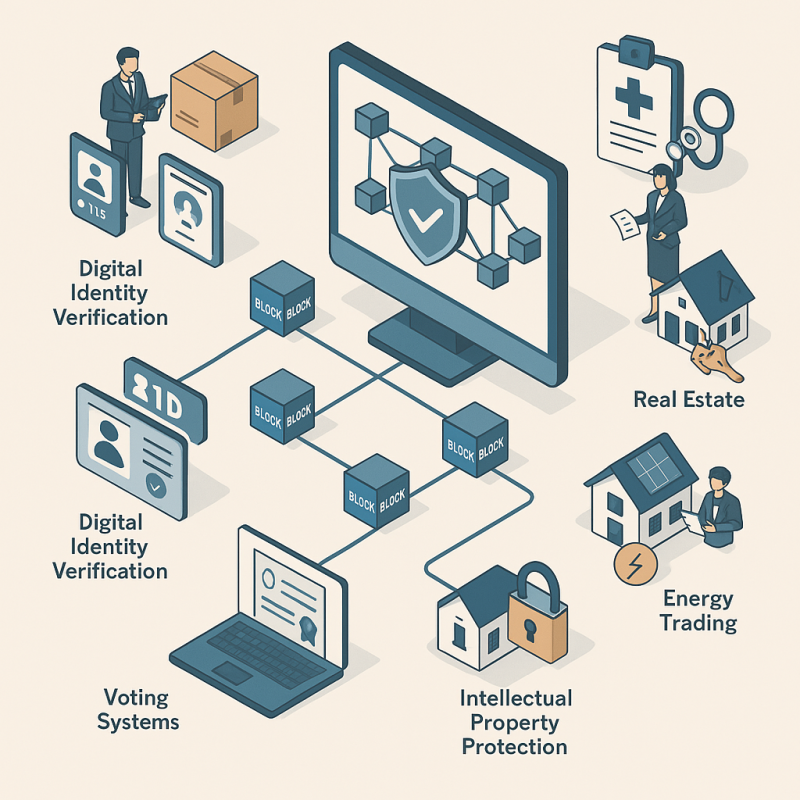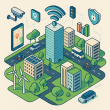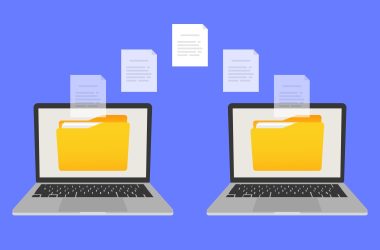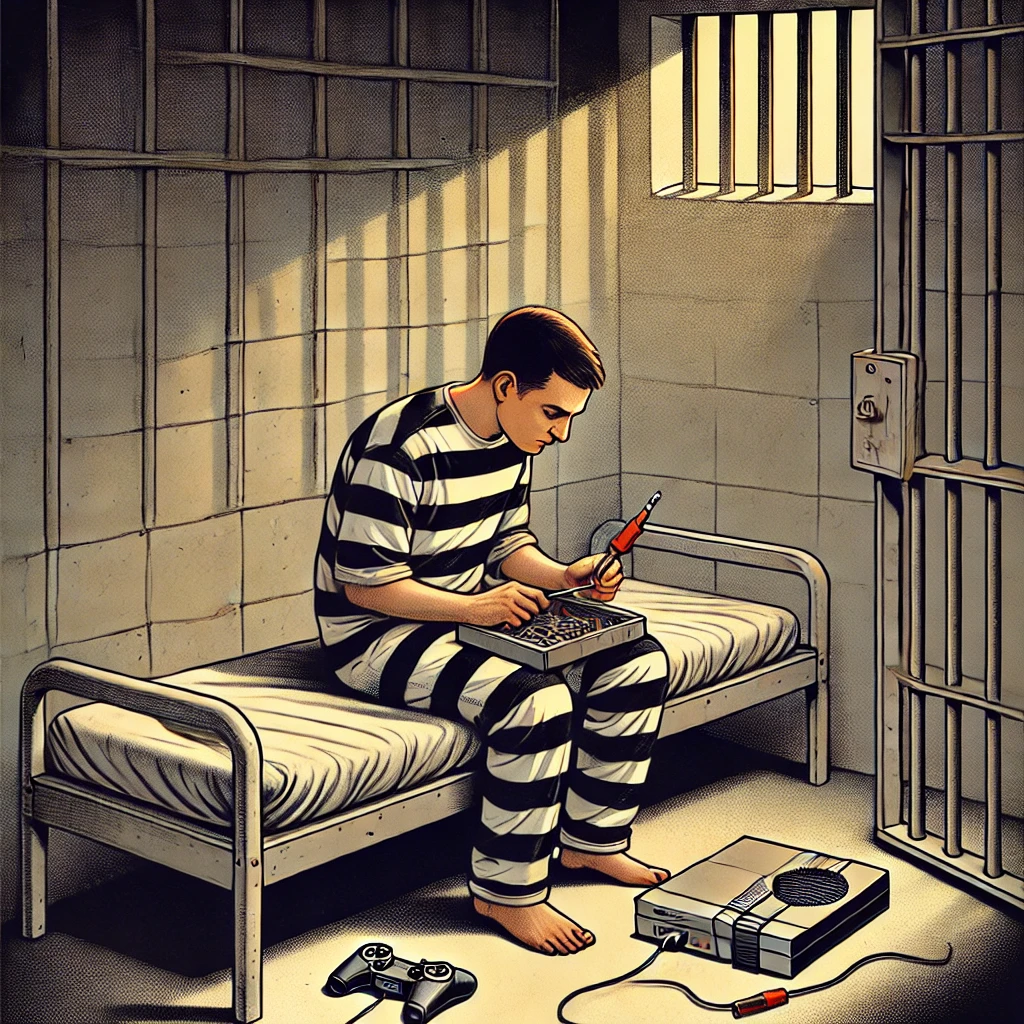Table of Contents Show
Blockchain technology, often closely tied to cryptocurrencies like Bitcoin and Ethereum, has gained a reputation as a financial disruptor. However, the real genius of blockchain lies not just in its ability to enable decentralized finance but in its broader applications across industries. Its structure – decentralized, secure, transparent, and immutable – makes it ideal for solving longstanding issues in areas like trust, data security, traceability, and efficiency.
As companies and governments increasingly look beyond Bitcoin, blockchain is being reimagined in various innovative and practical ways. In this article, we’ll take a deep dive into seven major areas where blockchain is being adopted outside of cryptocurrency, with real-world examples and evidence of its growing impact.
1. Supply Chain Management
One of the most compelling uses of blockchain is in supply chain management. In traditional supply chains, data is siloed, often manually recorded, and vulnerable to tampering. Blockchain solves this by providing a shared, immutable ledger that logs each step of the supply process in real time.
Major corporations like Walmart and IBM have already implemented blockchain to track food products from farm to store shelf. IBM’s Food Trust blockchain, for example, helps suppliers, processors, distributors, and retailers collaborate more effectively by offering a transparent view of food provenance. This improves recall processes, reduces waste, and ensures product authenticity.
For industries like luxury goods and pharmaceuticals, this level of traceability also combats counterfeit products, saving billions of dollars annually. According to a report by PwC, blockchain could add $962 billion to the global economy by 2030 through improved tracking and efficiency in logistics and supply chains source.
2. Healthcare
In healthcare, data fragmentation is a significant challenge. Medical records are often stored across disparate systems, making data access slow, incomplete, or insecure. Blockchain offers a secure and interoperable solution by storing patient data in a tamper-proof format that’s accessible only by authorized parties.
Startups like Medicalchain and Patientory use blockchain to provide patients full control over their medical records. These platforms allow doctors to access up-to-date information instantly – crucial for emergency care or specialist referrals.
Moreover, blockchain is being used to ensure the authenticity and safe distribution of pharmaceuticals. Modum, a blockchain-enabled supply chain company, helps monitor temperature-sensitive drugs through every stage of transit, helping to prevent spoilage and ensure compliance with safety standards.
The combination of patient data integrity and pharmaceutical safety makes blockchain a game-changer in modern healthcare.
3. Digital Identity Verification
Identity theft, data breaches, and bureaucratic red tape have made identity management a nightmare. With data stored in centralized databases, hacking or human error can have devastating consequences. Enter blockchain-based digital identity.
Platforms like uPort, Civic, and Microsoft’s ION allow users to create decentralized identifiers (DIDs) that are securely stored on the blockchain. These identifiers give users full control over their identity information and how it is shared.
This decentralized model helps reduce fraud, streamline verification for financial services, and empower individuals who lack formal IDs – especially critical in developing nations. The United Nations and ID2020 Alliance are exploring blockchain to provide secure digital identities for over a billion people worldwide who currently lack official documents.
Imagine opening a bank account, enrolling in school, or applying for a passport – without piles of paperwork. Blockchain makes that future more accessible.
4. Voting Systems
Election integrity is under global scrutiny, with concerns about hacking, tampering, and transparency plaguing democratic systems. Blockchain offers a solution by creating tamper-resistant voting platforms.
In a blockchain-based voting system, each vote is encrypted and added to the chain as a new block. Once recorded, it cannot be changed, ensuring the legitimacy and transparency of the election process.
Several pilot programs have demonstrated blockchain’s potential. In 2018, West Virginia conducted the first blockchain-based mobile vote in a U.S. federal election for overseas voters. Other nations like Estonia have been leading the charge in digital governance and are exploring blockchain to secure online voting.
These systems could revolutionize how we conduct elections by increasing voter turnout, enabling remote participation, and enhancing public trust in the outcomes.
5. Real Estate
The real estate industry is riddled with inefficiencies: mountains of paperwork, title disputes, lack of transparency, and fraud. Blockchain simplifies the process by digitizing property records and automating transactions.
Projects like Propy are helping streamline property sales by storing ownership records on the blockchain and automating the execution of contracts. This reduces the need for intermediaries, speeds up transactions, and minimizes costs.
One of the most promising applications is tokenization – converting a property or piece of land into digital tokens that represent shares of ownership. This allows for fractional ownership, meaning people can invest in real estate with far less capital. It also opens the door to global real estate investment without cross-border red tape.
Blockchain brings transparency and trust to an industry where both are often in short supply.
6. Intellectual Property Protection
Intellectual property (IP) is hard to protect in the digital age. From plagiarism to piracy, creators often struggle to assert ownership or receive proper compensation. Blockchain allows artists, inventors, and developers to register and timestamp their work, creating an immutable record of ownership.
Startups like Ascribe and Po.et enable digital creators to register their content on the blockchain. Once uploaded, the timestamp proves originality and can be used in legal disputes. Smart contracts can also automate royalty payments to artists every time their work is used or resold.
For the music industry, this is a revolution. Artists can bypass traditional labels and streaming platforms to distribute music directly and receive real-time payments, solving long-standing royalty disputes.
By providing proof of ownership and automating licensing agreements, blockchain ensures that creators finally get paid what they’re owed.
7. Energy Trading
Traditional energy grids are centralized and inflexible, but the rise of solar panels, wind turbines, and home batteries has enabled a new model: peer-to-peer energy trading. Blockchain makes this decentralized model viable by securely tracking and managing energy transactions between users.
In Brooklyn, New York, the Brooklyn Microgrid allows residents with solar panels to sell excess energy to their neighbors using blockchain. The platform logs each transaction securely, ensuring transparency and real-time settlement.
Blockchain platforms like Power Ledger and WePower are developing similar systems across the globe. They allow for energy trading without a central utility, enabling fair pricing and increasing the adoption of renewable energy sources.
By putting power – literally – into the hands of the people, blockchain is democratizing the energy market and supporting the transition to a greener future.
Conclusion
Blockchain is far more than a tool for digital currency. It’s a foundational technology reshaping how we handle data, transactions, and trust. From streamlining global supply chains to revolutionizing identity verification and real estate, the applications are vast – and growing.
As governments, startups, and global enterprises continue to explore blockchain beyond crypto, we’re likely only scratching the surface of its potential. According to Gartner, blockchain will generate $3.1 trillion in new business value by 2030.
If you still think blockchain is just about Bitcoin, it’s time to look again. The industries that embrace its capabilities today will likely be the leaders of tomorrow.









